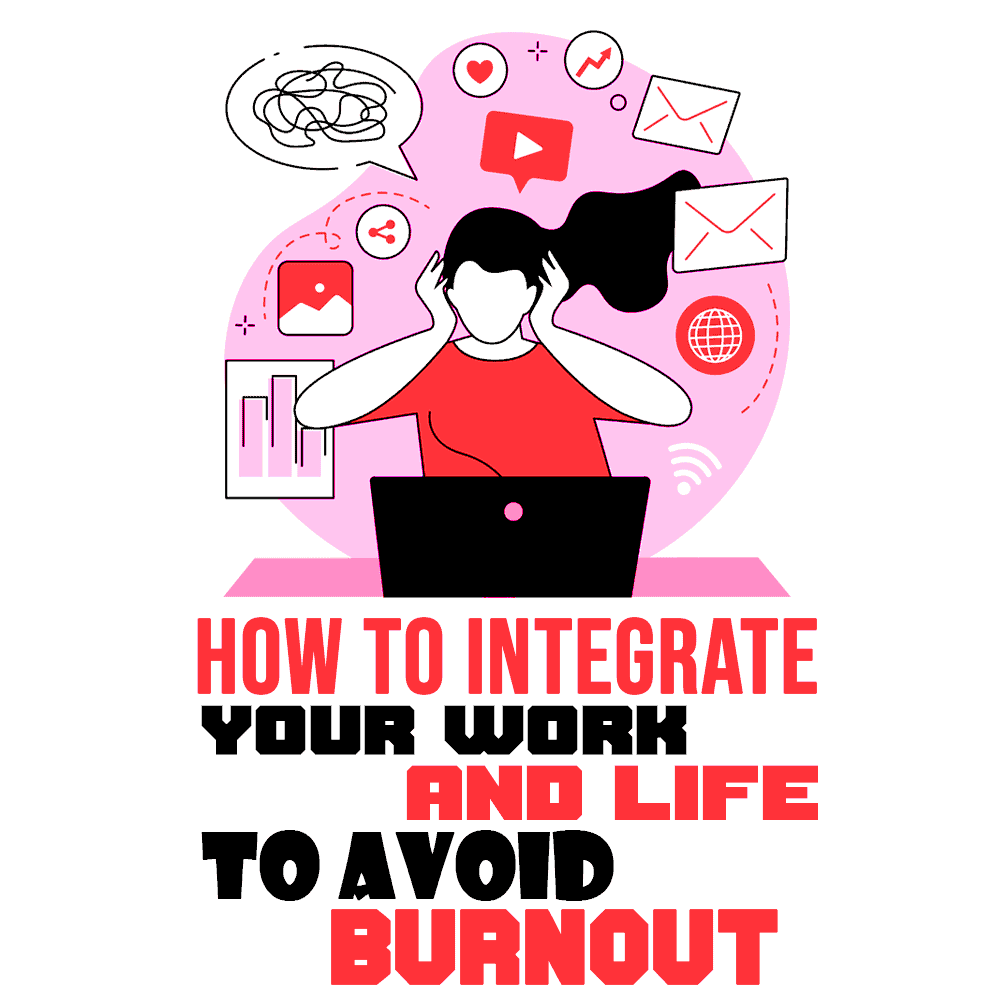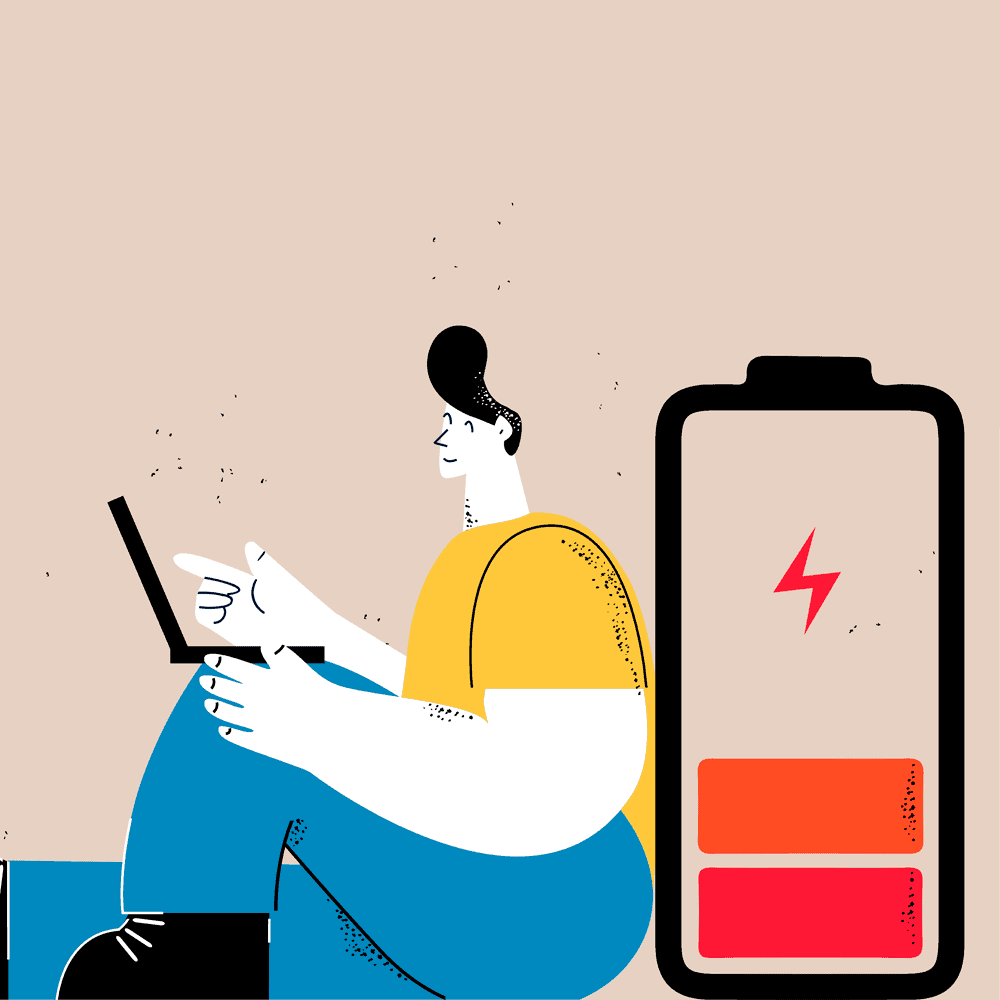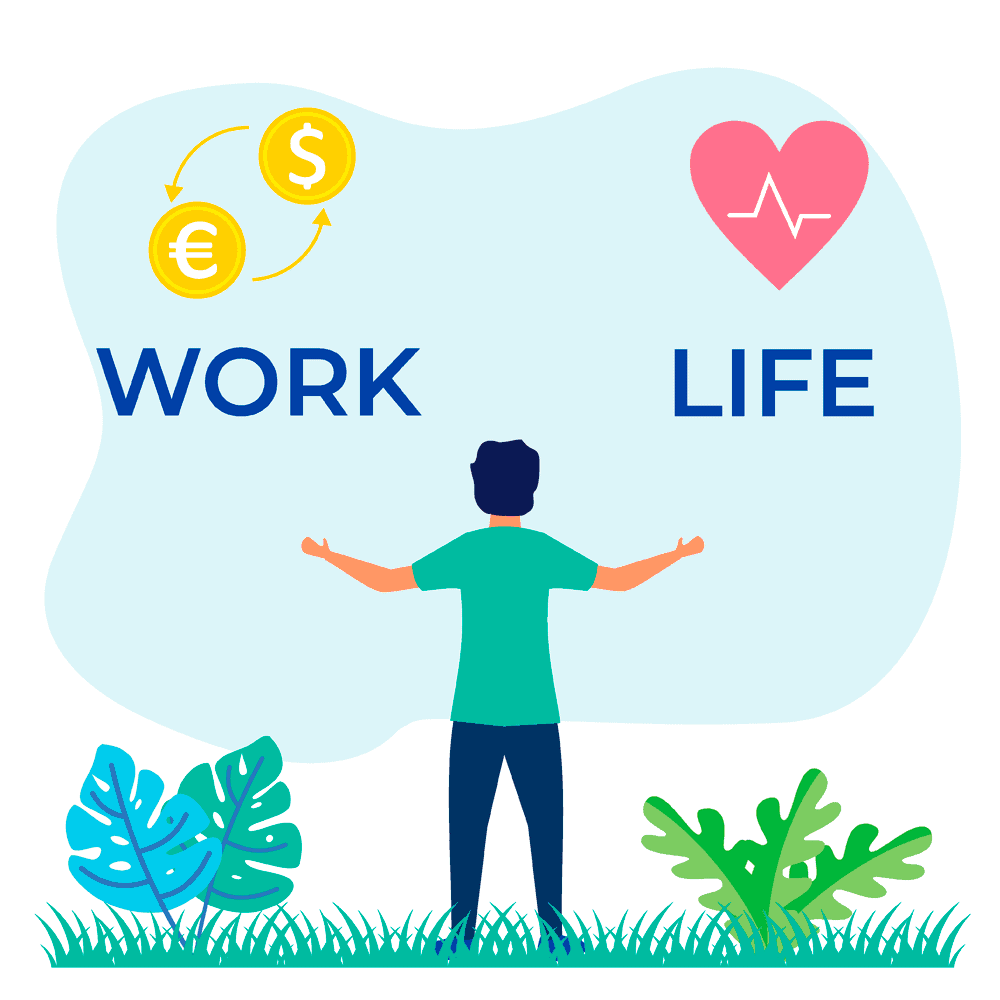 We’ve all heard of work-life balance and how companies promise it, but what about work-life integration? As a software engineer and technical writer who graduated during the pandemic, I know that work-life balance has never been a promise for the entry and junior positions but is essential when it comes to hiring for those senior roles.
We’ve all heard of work-life balance and how companies promise it, but what about work-life integration? As a software engineer and technical writer who graduated during the pandemic, I know that work-life balance has never been a promise for the entry and junior positions but is essential when it comes to hiring for those senior roles.
As someone who has worked in two drastically different types of environments, I wondered: What if we’re looking at it all wrong?
What people want from their jobs isn’t work-life balance, where you weigh the choices against each other. Instead, what you might really be seeking is work-life integration, where work and life are not mutually exclusive.
In this post I’ll show you how to get the best of both worlds, avoiding burnout and combining what you love with your career.
Pandemic Timeline
The pandemic hit me when I was still a student, in the midst of my yearlong capstone project on software development as part of the Computer Science curriculum. After graduation, I was fortunate to have been offered an internship to continue with the lab.
While life consisted of me trying to find a full-time job, I didn’t have time to date or create long-lasting connections. When the position ended, I was able to find a non-sustainable work-life balance where I got to go back and revisit ideas, projects, and improve. Finally, I accepted an offer at a company with a unique culture that promotes growth through work-life integration.
Work
After graduation in June 2020, I juggled two part-time internships and was essentially working full time, 40+ hours a week. Interestingly enough, I’m an introvert so I thought since it was remote I’d be fine. Boy was I wrong.
I wasn’t able to find any time to search for a single proper full-time job, and by November 2020, I realized that I needed to pick one or the other of these part-time jobs. In the end I chose the project I was more interested in: working for a research lab to reduce the impact of power outages and wildfires, which is far too common in California.
I felt how working remotely had drained me and my colleagues of energy and mental health over time. The reasons were numerous, but here are some of the most important.
The main cause of the problem was meetings. Everyone had different schedules and things going on in their life. Moreover, our previous Agile plan employed the consensus-based solution Planning Poker, which is difficult to do online. In-person, this was working, so planning sessions didn’t take too long, but coming to a consensus online took one to two hours over the scheduled time and was a nightmare to find a time when everyone was available. All in all, the experience was not fun and brought morale down when meetings ended far off schedule.
This cascaded into a sinkhole effect. The time spent at meetings took away from time spent researching and polishing. With new features happening so slowly due to all the meetings, it became difficult to maximize productivity and enter the state of “deep work” by minimizing distractions. Looking back, I wish we had had a better work balance to find the time to add animations on the site, not just delivering a static site.
In addition to time spent with people, there’s also time spent pioneering, especially when working in research and development (R&D). Most of the field is uncharted, meaning we can’t all be experts when we are the pioneers of new fields. Personal research is needed to deepen your knowledge, but when do you have time for it among all the meetings?
Life
My first year and a half of job searching, from March 2020 to August 2021, wasn’t very productive. I had searched a bit too late, starting at the very beginning of the pandemic, and wasted away my junior year by not getting a summer internship.
Seeing as I had enough units to graduate with two more courses, I became a part-time student online for the last quarter to hopefully find the balance between searching for a job (life) and continuing my studies (work).
During this time, I applied to jobs, looking for a software developer position. At the time, I didn’t understand the difference between developer and engineer and later on discovered that I am more of an engineer.

I almost signed this contract, but after some digging and support from my friends and family, we learned its true intentions and didn’t sign. I knew traveling at will and being tied down for two years, combined with the lack of support for long commutes, including flights, would not offer me any time for life or my hobbies and interests. The short end is, I couldn’t see myself happy living such a suffocating lifestyle no matter the pay.
This experience taught me a valuable lesson applicable to all job seekers out there. Always be aware of a companies’ motives for hiring. Read the offer letter to understand exactly what you're getting yourselves into! Check the fine print and contract termination clause, and don’t be afraid to ask for advice.
Balance
During August 2021, I was officially unemployed. I had known my time at the lab would eventually come to an end, as I had to be enrolled as a graduate student if I wanted to continue working at the research lab.
When working, I had no balance, my schedule consisted of meetings, planning, and designing, with not enough time to develop. Being unemployed freed up my time as I balanced personal development with my job search. If I didn’t understand a framework needed for potential jobs quite well, now was the best time to learn it.
During this time, I continued a paused project I’d yearned to do since January 2021 as my new year’s resolution. I created a personal website after learning Jekyll and deployed it on Github pages. It contained my resume, a blog, and portfolio projects. This developed into the habit of taking notes while learning and reviewing them to write a short post on my blog.
Having made the blog, I wrote about technical skills after watching London App Brewery on LinkedIn Learning to self-teach Flutter following their self-paced bootcamp. With the Flutter knowledge, I delved into a side project called Tetanggaku, meaning “my neighbor” in Indonesian, which is focused on creating a platform for Indonesian COVID relief.
On the side of life, I wrote about my day-to-day whether I was looking into Myers Briggs or attending an online DevWeek conference. Both experiences were inspirational to me, helping me understand myself as well as the technological advancements, especially augmented reality (AR) integration and gamification of the web.
As strange as it was, I felt a balance between work and life after I was unemployed. I had all these ideas I wanted to do but never had time to do. But of course, living in “early retirement” at 22 wasn’t possible for me, so I began a search for a company that would let me explore new technologies and mesh well with a balance.
Before, I had gotten incredibly burnt out seeking a balance, until I found a company culture that could provide me with the solution I’d been seeking.
Pathway to Integration
My understanding and experience of work-life integration stems from my first full-time job, at Mage, working in a startup environment. I felt how their team culture is different from when I was working, living, or balancing.
My ideal lifestyle wasn’t about picking and choosing, but rather living together as a company that’s more of a family. Work-life integration is clearly reflected in the process, work assignments, and meetings or interactions with staff.
Process
I applied to Mage as a full-stack engineer and didn’t pass the technical interview. A couple of days later, I received a message from the CEO about wanting to see my personal blog. We talked about it during the phone screen, and I sent him the link.
Thankfully, he liked it and sent me a trial to be a technical writer. I had a week to write my first public article on regression metrics. I love role-play and combined it in the article to tell a story; a short, simple, yet entertaining story.
The article was a hit, coupled with the supportive staff creating the best imagery I’ve ever seen. It showed me that content is best served with imagery and not all educational written material has to be a Ph.D. thesis, Google scholar article, or textbook. I passed the trial and was now a full-time technical writer.
Work

Since then, my activities have grown to working on SEO and community outreach to develop branding that delivers a magical experience. Additionally, we have an onboarding reading list to show that we think differently, much more toward integration.
My latest magical creation is our Discord Community, where we try to blend the lines between corporate and community with RPG features like leveling and unlocking skills.
Integration
At my current workplace, we follow a hybrid approach to the work-life balance equation. For instance, during the pandemic we’re all remote but get together at an Airbnb once a month to increase team bonds. Moreover, we bring our hobbies and interests to work so meetings are more than a robot demanding “What have you done, what are you doing, and what will you do?”
Integration instead asks “How are you doing? What’s a fun fact about you? Is there anything you’re not proud of working here? What can we do to help you be on track?”
These questions let us know what’s going well, what’s blocking, and what they’ve done but without being too direct or lacking in compassion.
Passive
Integrating passively is simple, it’s about establishing a connection with the team that can be used to understand how your team feels rather than what your teams have completed.
A great way is to have icebreaker activities that let us get to know each other and connect more about each other on a selfless familial scale with topics ranging from “What’s your dream job?” to “What’s the scariest experience you’ve had?”
It can also be through suggesting books. One of our team’s favorites is Insanely Simple: The Obsession That Drives Apple's Success, which teaches us about keeping meetings short and small to reduce burnout and unneeded attendance. It’s small but goes a long way compared to mandatory meetings with little interaction.
Another book is Walt Disney: The Triumph of the American Imagination by Neal Gabler, which shows how success is when everything is connected. In light of this, I believe that we can apply this to our daily life.
Active
The ideal active integration is when life isn’t too far away from work. One promise of remote work was that it removed commutes, but it also removed communities. With work-life integration you’ll have enjoyable, short commutes to the company office and be able to participate in group activities like eat dinner, watch movies, and my personal favorite, play board games.
But it isn’t limited to that; integration includes showing others how to expand the world around them by suggesting more niche hobbies like mountain climbing, kickboxing, and ping-pong (or table tennis). As for me, I’m itching to play badminton!
I believe Mage’s success and growth is attributed to their practice of work-life integration. You’ve heard of “work hard, play hard,” but integration takes it to the next level.
It’s important to care for employees online or offline and reward them equal to the amount of effort they put in to show they’re valued. One of my colleagues is a Disneyphile, so to celebrate in-person, the company went to LA and took a day off to recharge as a group at Disneyland on a VIP tour.
Bonds Beyond Balance
The fine line between passive and active is that passive integration can be accomplished remotely. Remote activities still have the power to bring the team together, such as reading books, playing games, watching movies online, or simply asking “How’s your weekend?”
Personally, I believe everyone likes to feel welcome. Don’t just come to them when you need to for a work-related task, but chat with them and get to know them. Active is a stronger form of integration, as it requires in-person activities but tends to construct more concrete bonds.
Spend real time out of your day to show you care by attending a company party. Join your colleagues on their hobbies, and make them feel welcome. Integration is all about bonding, not balancing. Whether you’re integrating passively or actively, it’s important to take care of your company by creating unbreakable bonds.
Integrate, Don’t Separate
Work-life integration is when the job complements your passions. My passions have been writing, coding, AI, and games. Your passion may not be the same as mine, but it’s surely more than just coding.

If you’re already in a company, ask and see what you and your peers can do to make the company a better place. Companies tend to advertise “Make the world a better place,” but the best way to show it is to tend to their internal world first.
Right now it’s a hot market for job seekers, The #GreatResignation is a byproduct of work-life, and that’s because companies offer balance but not integration. A balance eventually leads to separation when broken, whereas if the bonds are built as a strong force like in atoms, it becomes nearly inseparable.
Together, let’s change the #GreatResignation era to the #GreatIntegration by starting with company culture trickling down to worker treatment.
